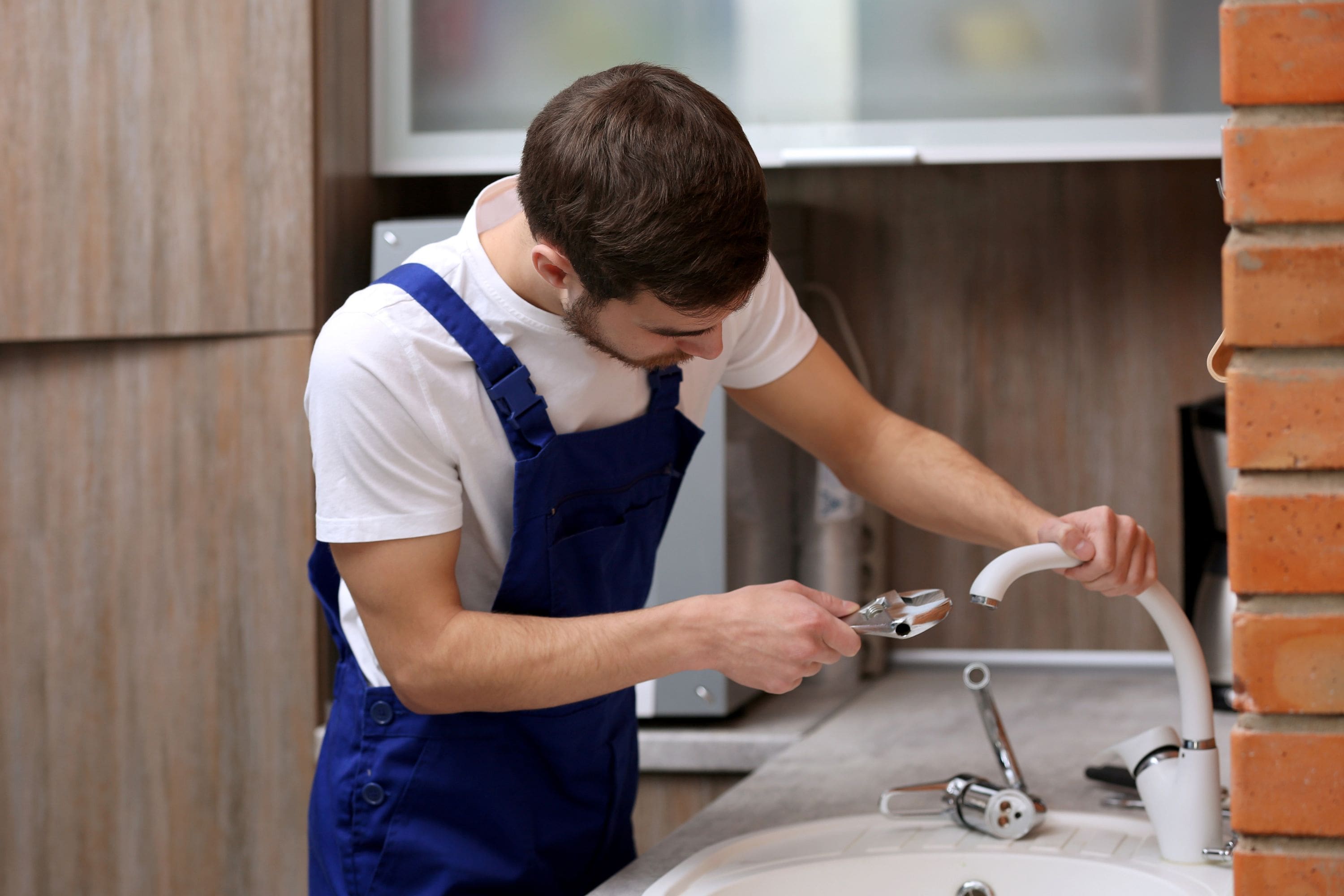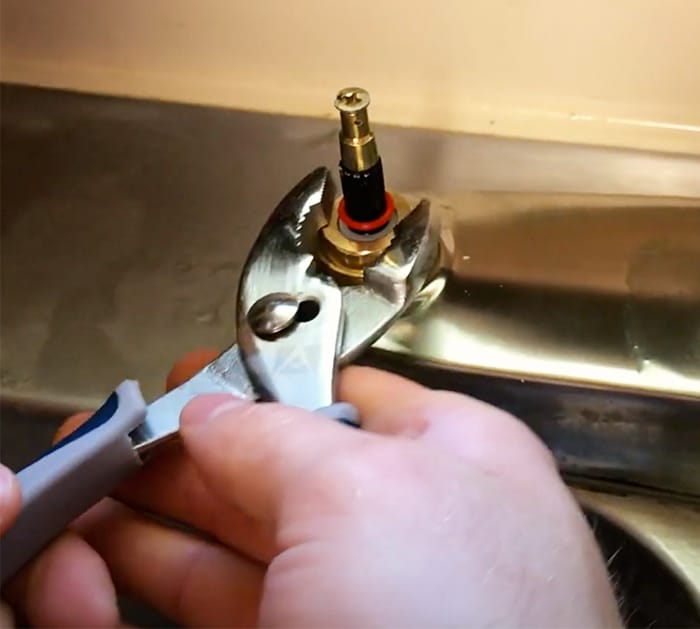The publisher is making several great points regarding 4 Common Reasons for a Leaky Faucet as a whole in this great article directly below.

Trickling taps could look like a small inconvenience, but their effect exceeds simply the inconvenience of the noise. From wasting water to sustaining unneeded monetary prices and health risks, disregarding a trickling tap can lead to different effects. In this write-up, we'll delve into why it's essential to address this common home concern without delay and properly.
Wastefulness of Water
Ecological Effect
Leaking faucets contribute significantly to water wastage. According to the Epa (EPA), a solitary faucet dripping at one drip per secondly can lose more than 3,000 gallons of water annually. This not only stress water resources but additionally affects ecosystems and wildlife based on them.
Financial Costs
Enhanced Water Costs
Past the environmental effect, leaking taps can blow up water bills significantly. The gathered wastage in time translates into higher utility costs, which can have been stayed clear of with timely repairs.
Potential Building Damages
In addition, extended dripping can lead to harm to components and surface areas surrounding the tap. Water accumulation can cause discoloration, rust, and even architectural concerns if left neglected, leading to additional repair expenses.
Health Concerns
Mold And Mildew and Mildew Growth
The continuous presence of dampness from a dripping tap creates an optimal setting for mold and mildew and mold growth. These fungis not just jeopardize interior air quality yet also present wellness risks, especially for people with respiratory conditions or allergic reactions.
Waterborne Conditions
Stagnant water in trickling faucets can end up being a breeding place for bacteria and other pathogens, boosting the threat of waterborne illness. Contaminants such as Legionella microorganisms grow in stationary water, possibly leading to serious illnesses when ingested or breathed in.
DIY vs. Professional Repair
Advantages and disadvantages of DIY Repair
While some may try to take care of a leaking faucet themselves, do it yourself repair services include their own set of challenges. Without correct understanding and tools, do it yourself attempts can aggravate the problem or lead to insufficient repairs, lengthening the trouble.
Benefits of Working With a Specialist Plumber
Hiring a specialist plumber ensures that the underlying root cause of the dripping faucet is resolved efficiently. Plumbing professionals possess the know-how and tools to detect and fix faucet issues effectively, conserving time and decreasing the threat of further damage.
Step-by-Step Guide to Repairing a Dripping Faucet
Tools Needed
Prior to attempting to fix a leaking faucet, gather the necessary tools, including an adjustable wrench, screwdrivers, replacement components (such as washers or cartridges), and plumber's tape.
Usual Faucet Issues and Their Solutions
Recognize the sort of faucet and the certain issue triggering the drip. Usual problems consist of damaged washing machines, rusty valve seats, or malfunctioning O-rings. Describe manufacturer directions or on-line tutorials for step-by-step support on fixings.
Preventive Measures
Regular Maintenance Tips
To avoid trickling taps, execute regular maintenance such as cleansing aerators, inspecting for leaks, and changing worn-out components quickly. Furthermore, think about installing water-saving tools or upgrading to extra reliable components.
Significance of Prompt Fixes
Attending to dripping faucets as quickly as they're seen avoids additional water wastefulness and potential damage, inevitably conserving both water and money over time.
Impact on Residential Or Commercial Property Worth
Understanding of Well-Maintained Residential Property
Maintaining a property in good condition, including addressing upkeep problems like trickling taps, enhances its perceived worth and charm among prospective purchasers or renters.
Impact on Resale Value
Features with well-kept plumbing components, including faucets, command greater resale worths in the real estate market. Dealing with trickling taps can contribute to a positive perception throughout building evaluations and settlements.
Environmental Obligation
Private Payment to Preservation
Taking duty for dealing with leaking faucets aligns with broader efforts toward water conservation and ecological sustainability. Every person's activities jointly make a considerable impact on preserving priceless sources.
Lasting Living Practices
By focusing on timely repair services and embracing water-saving habits, people add to sustainable living techniques that profit both present and future generations.
Verdict
Attending to a dripping tap surpasses simple convenience; it's a crucial step towards saving water, reducing monetary costs, and securing health and home. Whether through DIY fixings or professional help, doing something about it to deal with dripping taps is a little yet impactful means to promote accountable stewardship of sources and add to a much healthier, more sustainable future.
How to Fix a Leaky Faucet: Step-by-Step Repair Guide
A leaky faucet may seem like a simple annoyance, but if it's not fixed promptly, that leak could cost hundreds to potentially thousands. From water damage to mold, mildew, and high water bills, even a tiny leak can be catastrophic if left unattended. Damage like this can even affect the overall value of your home, so it's important to take the right approach for leaky faucet repair. You may need the help of a plumber in some cases, but we've got a few tips you can try on how to fix a leaky faucet before calling the pros.
Four Faucet Types
When you're learning how to fix a leaky faucet, the first step is knowing what kind of faucet you're working with! There are four common types.
Cartridge Faucets
Cartridge faucets come in one- or two-handled varieties. In one-handled cartridge faucets, hot and cold water combines in a single cartridge. In the two-handled versions, hot and cold water are controlled separately and mixed in the faucet.
Ball Faucets
Ball faucets have a single lever you push up and down to adjust the pressure and rotate to change the temperature. A slotted metal ball controls the amount of water allowed into the spout.
Compression Washer Faucets
They're the oldest type of faucet, but they're still used in many homes — especially older ones. Compression faucets have two separate handles that, when turned, raise or lower the washer that seals a water valve. This valve stops water from flowing through the faucet when it is turned off.
Disc Faucets
Disc faucets rarely need to be repaired due to their maintenance-free design. The water flow is controlled by two discs — the upper one raises and lowers against a fixed lower disc, creating a watertight seal. If your disc faucet starts leaking, you may need to replace the seals or clean residue buildup from the inlets.
Fixing a Leaky Faucet
Step 1: Turn Off the Water
Whether you're learning how to fix a leaky bathtub faucet or how to fix a leaky kitchen faucet, always turn off the water supply to your working area when you're fixing a leak. The last thing you want is a flood added to your list of things to fix.
Look for the shutoff valves below your sink or around the tub and turn them clockwise to stop the water flow. If your faucet doesn't have shutoff valves, you may need to turn off the water for the whole house. Check to make sure it's off by turning the faucet on. If nothing comes out, you're ready to start the repair.
Step 2: Take Apart the Faucet
How you disassemble your faucet depends on the type of fixture you have. You can use a flathead screwdriver to remove the caps on top of the handle or handles for cartridge and compression faucets. Inside, you should see handle screws. Unscrew these with a screwdriver to remove the handle.
Disc- and ball-style faucets will typically have an inlet screw near the handle, and removing that will reveal the interior of the faucet.
Detach the Valve Stem
For cartridge- and compression-style faucets, you'll see the inner valve stem or cartridge once you remove the faucet handles. If you have a compression faucet, unscrew the brass valve stem. If you have a cartridge faucet, pull out the cartridge. If your cartridge has been in place for a while, it may require some tools or extra force to remove it due to mineral deposits.
Examine and Replace Parts
Once you've removed the parts, check them out to confirm what needs to be replaced. You may see corroded rubber washers, O-rings, stems, or cartridges. On a ball-style faucet, check the seats and springs for damage.
If you need to repair a leaky disc faucet, check the inlet and seals on the lower disc.
Once you determine what parts must be replaced, visit your local hardware store. Bring the damaged parts with you to ensure you can purchase the correct components to replace them.
Clean Valves and Faucet Cavity
If you've removed a stem or cartridge, you may notice mineral buildup in the faucet's threads. Use white vinegar to clean the valve seat by soaking it for a few minutes, then scrub it away with a soft toothbrush and rinse with warm water. You can also clean the interior of the faucet in the same way.
Reassemble the Faucet
Once your faucet is cleaned and the required parts have been replaced, it's time to reassemble it. Put the pieces back together and slowly turn the water supply back on. Doing this slowly is crucial because too much initial water pressure can damage the new hardware you've just installed.
https://homewarranty.firstam.com/blog/how-to-fix-leaky-faucet

Do you enjoy reading about What Causes Leaky Faucets & How To Fix Them? Place a comment directly below. We would be delighted to hear your feelings about this content. In hopes to see you back again later on. Sharing is good. Helping others is fun. We thank you for your readership.